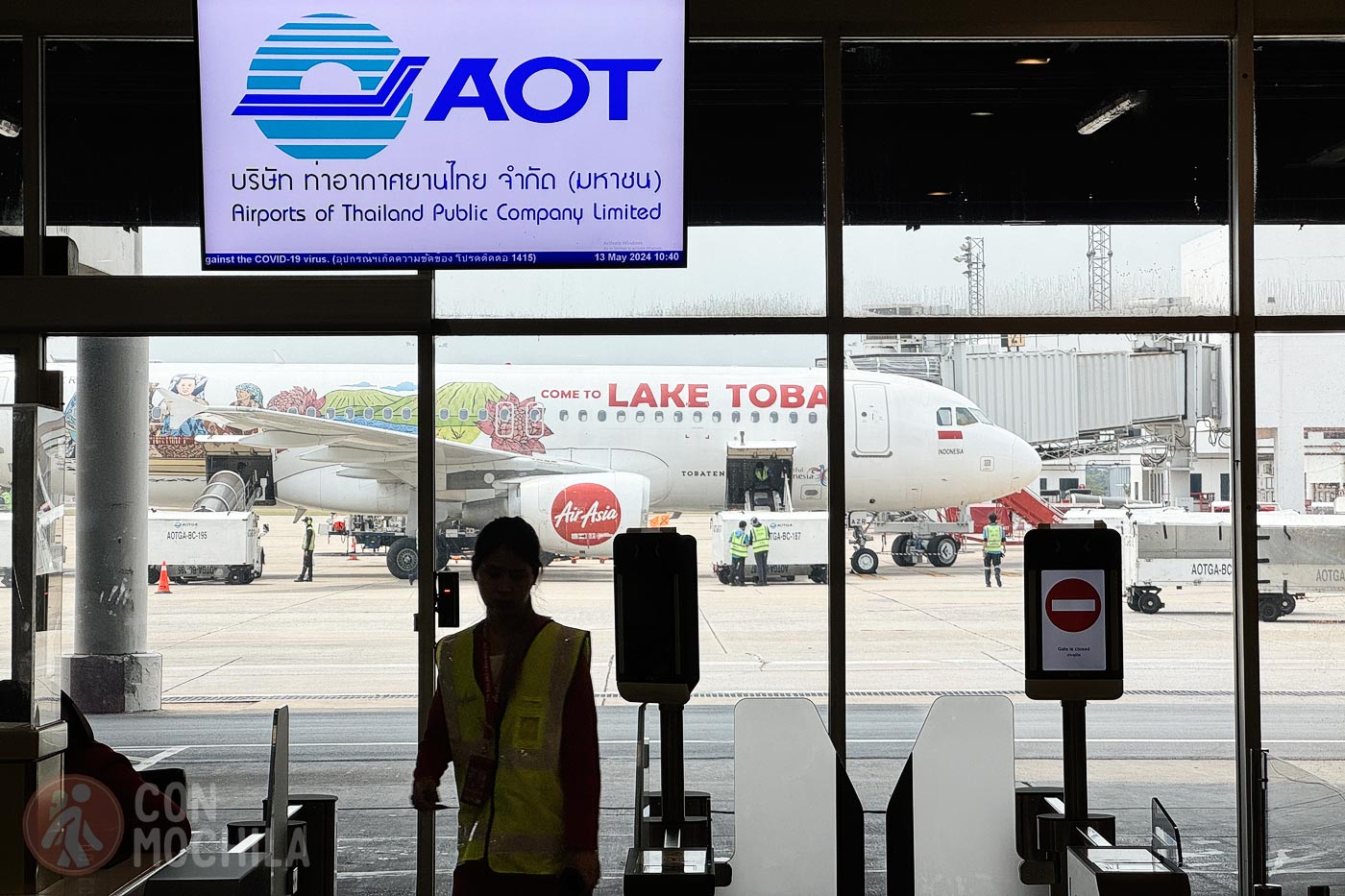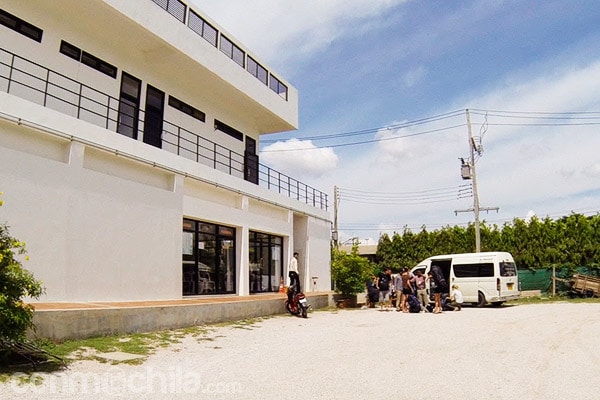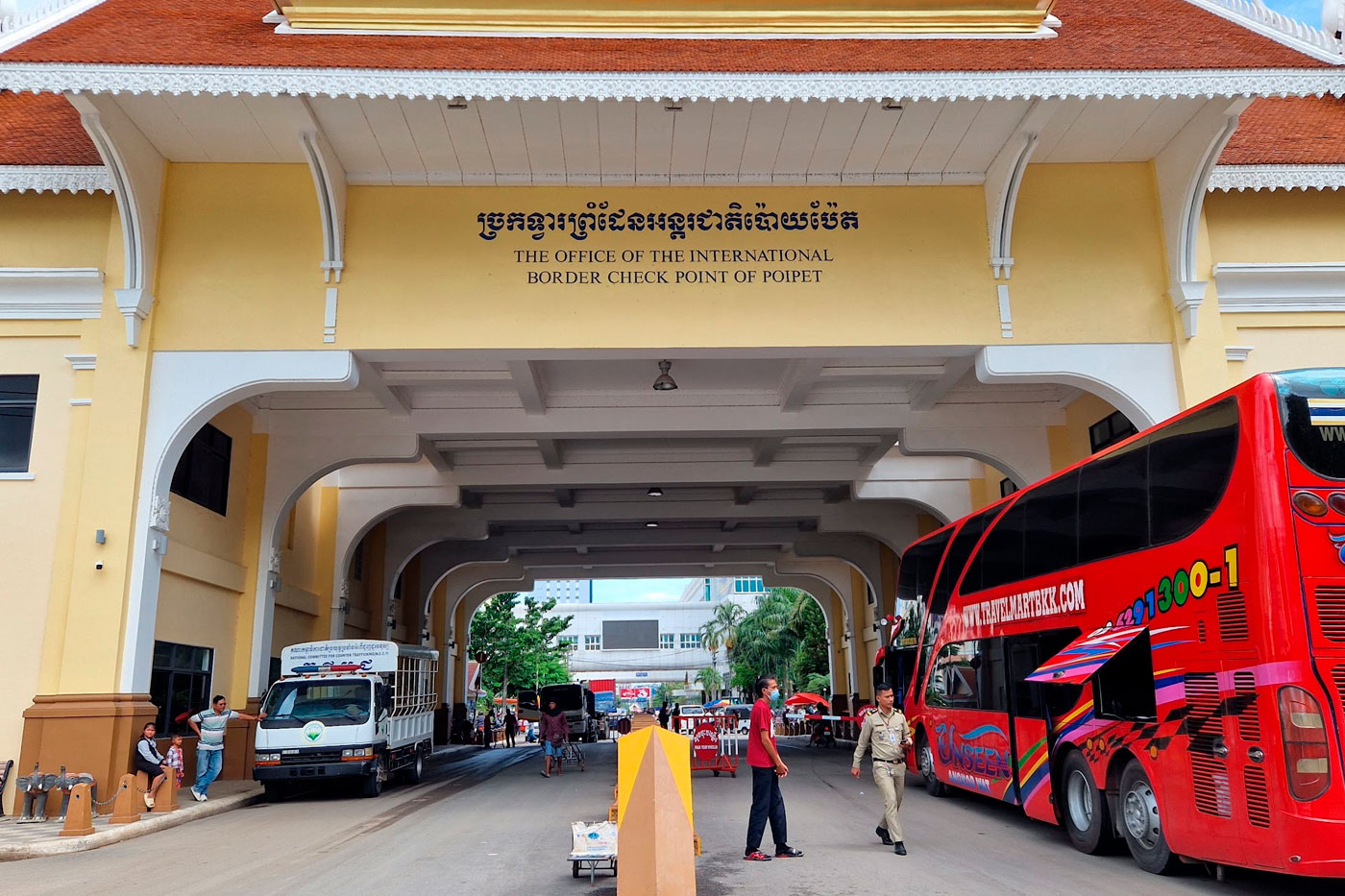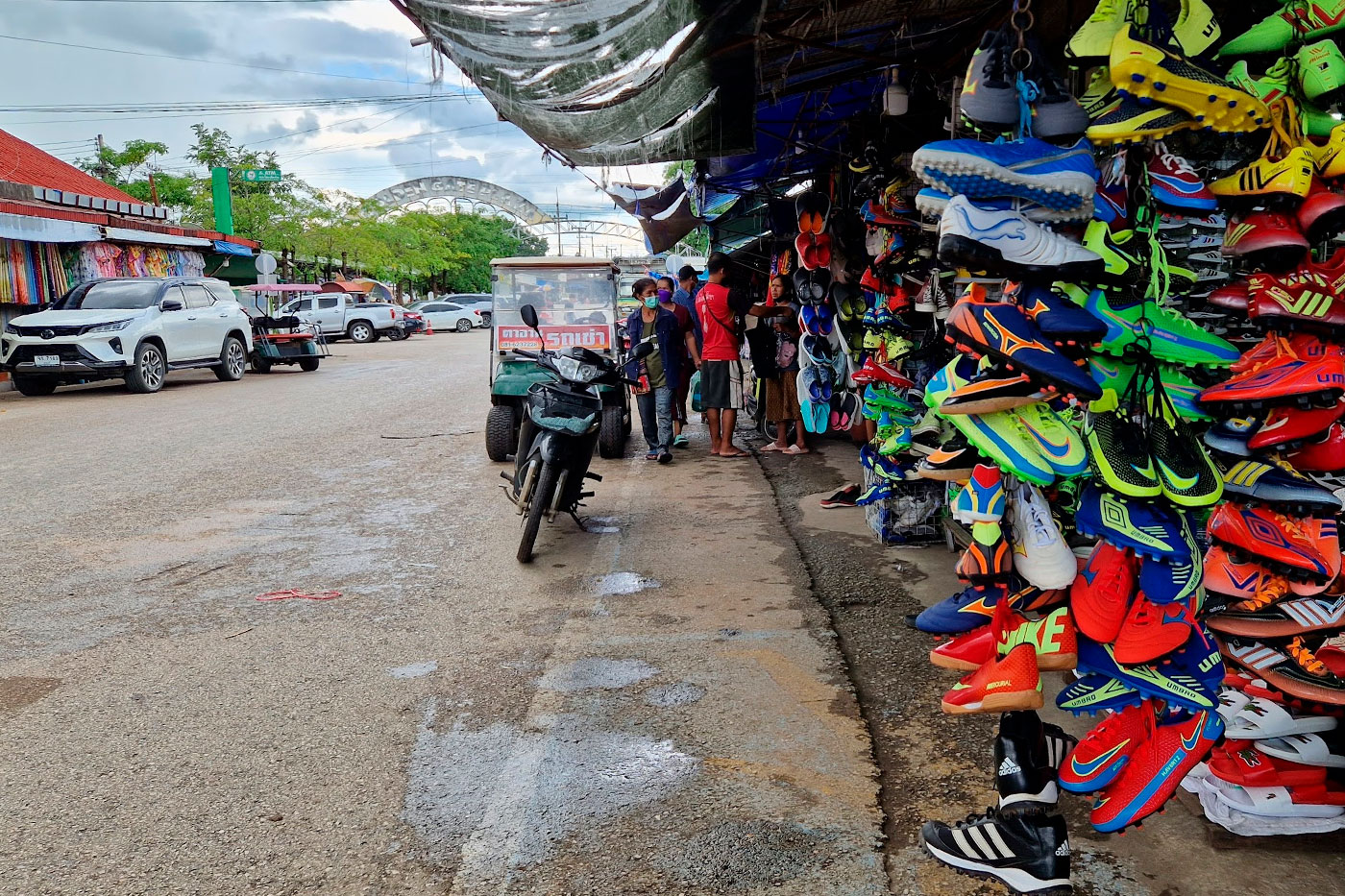One of the most popular routes for travelers in Thailand is the journey from its capital to the Angkor temples in Cambodia. This is a must-do trip to visit an architectural gem, but it can quickly turn into a hassle if you fall victim to the scammers who operate at one of the busiest borders in Asia, an area notorious for its casinos and other shady dealings.
Do you want to know how to get from Bangkok to Siem Reap comfortably and without any trouble? We’ll tell you everything you need to know.

The distance between Bangkok and Siem Reap is around 400 kilometers, and there are several ways to make the trip: by plane, the fastest option, taking just over an hour, for around $68; a combined bus journey across the border for about $56, and by van or taxi, a more independent option for around $28.
If you want a hassle-free journey, there are daily flights from Bangkok to Siem Reap with low-cost airlines for around $68, though prices may vary. This is by far the most comfortable option for getting from the Thai capital to the Angkor temples.

Keep in mind that Bangkok has two airports: Suvarnabhumi Airport (BKK) (map), the larger one, and Don Mueang Airport (DMK) (map), mostly used by budget airlines. Since both are located outside the city, it doesn’t matter which one you fly from—just choose the best flight based on schedule and price. If needed, you can take the train from the city center to the airport for 30 baht.
Upon arrival, Siem Reap Airport is small and easy to navigate. You can get a Cambodian visa on arrival for $34, and transportation into the city is very cheap, with options like motorbike taxis available just outside the airport.
The Poipet border crossing (on the Cambodian side) and Aranyaprathet (on the Thai side) is one of the most challenging in Southeast Asia, as we explained here. Poipet is known for casinos, party culture, and a chaotic atmosphere, but also for scams.
If you travel with the wrong company, they may try to make you buy a visa before you reach the official immigration area on the Cambodian side, which is a very common scam.

For this reason, we strongly recommend avoiding tours from Khaosan Road, Bangkok’s famous backpacker district. The best option is to arrange the trip independently.

However, if you’re new to traveling in Asia and don’t feel ready to handle everything on your own—though it’s actually quite simple—you may prefer a combined ticket with a reputable agency that doesn’t have hidden fees.
The Giant Ibis agency, which you can book through 12GoAsia, offers a bus trip from Bangkok (departing near Khaosan Road) (map) to the Thai border. Upon arrival, they require you to process your visa through them, charging an additional $5 fee—though at least they inform you in advance. After crossing the border, they provide another bus that takes you directly to Siem Reap.
This option is significantly more expensive than making the journey independently, costing around $50, plus the extra visa charge. The trip takes over eight hours, making it a viable choice only if you have little experience traveling in Asia and prefer a hassle-free option.
The best way to avoid scams along the route is to travel independently, which is usually cheaper and more flexible. The journey starts at Ekkamai Bus Terminal, one of Bangkok’s main departure points.
From Ekkamai, buses to Aranyaprathet (the Thai side of the border) depart every hour, starting at 5:30 a.m. until 11:00 a.m. However, due to heavy traffic at the border, we do not recommend departing later than 8:00 a.m.
If you buy your ticket at the station, the price is 240 baht. On the other hand, if you book through 12GoAsia, the price increases to 380 baht, but you guarantee your seat (not all tickets are available online).
Although there are other departure points in Bangkok, Ekkamai is the most convenient, offering a comfortable minibus ride that takes around four hours. The van drops you off at the Aranyaprathet border market, a popular shopping area for counterfeit brand clothing.
Here, you’ll find cheap food stalls and a train station. Directly in front of the station, you’ll see a passageway leading to the crossing, it’s impossible to miss. Important: Crossing the border is free, so do not pay anyone who claims otherwise, ignore taxi drivers offering assistance or trying to sell you visas. You can walk across the border easily on your own.

After getting your exit stamp on the Thai side, walk a few meters to the Cambodian immigration building, where you need to obtain a visa on arrival. It costs $30, so do not pay any additional fees, and bring US dollars, if you pay in Thai baht, they will overcharge you. Also, bring a passport-sized photo to avoid extra charges.
Upon entering Cambodia, you will be in Poipet, a chaotic area where many people will approach offering “help.” Ignore them and continue walking until you reach the designated bus and taxi booking area. Follow the only possible path to a roundabout with ticket counters, this is where transportation offers begin. We’ll tell you the prices you’ll be paying right now, in 2025, and you choose.
If you want to travel by bus or minibus, the price ranges between $7 and $15. The highest fare, $15, is offered by 12GoAsia, while the regular price is around $10 or $12 (it’s up to you). If you pay less, the bus may take a longer route and make too many stops.
The alternative is to take a taxi. As of today, the price is $55 between Poipet and Siem Reap. However, some drivers may charge much more, so now you know the fair price. Interestingly, many travelers who don’t know each other choose to share a taxi with four people to split the costs. The trip takes less than three hours.
If you’re looking for an alternative route from Bangkok to Siem Reap by land, you can modify your trip by traveling from Ekkamai to Aranyaprathet and then taking the train from Aphiwat Central Station (map). A train departs at 5:15 a.m. and takes almost five hours to reach the Cambodian border. Unfortunately, you cannot book this trip in advance, so if you choose this option, you’ll have to take your chances.